Google Pixel 6
The Google Pixel 6 is gearing up to be the biggest update to Google’s smartphone line in years, and while we’ve only had our hands on the device for a short time, we’re already seeing positive signs.
On paper, the Pixel 6 is a more premium device than its predecessors, with a sleeker design and more powerful cameras. Most notably, it packs Google’s new Tensor chipset, the first silicon built by the company – but since we can’t talk about performance of the phone yet, we can only look forward to testing it fully.
While we don’t yet know how the Pixel 6 performs compared to other phones, we know it packs 8GB of RAM, 128GB or 256GB of storage, and a 4,612mAh battery – all good specs for the price. The 6.4-inch Full HD (2400 x 1080) OLED display is larger than the screens on most flagships, and with a 90Hz refresh rate, offers smoother browsing than phones that max out at 60Hz – although 90Hz is really the minimum we’d now expect to see on a phone in the Pixel 6’s premium-mid-range price tier.
It’s the phone’s cameras that many Pixel fans are likely to be most excited about, as Google finally gives us higher-megapixel sensors worthy of its outstanding photo software.
The two rear cameras are a 50MP main shooter and 12MP ultra-wide camera with a 114-degree Field of View – again, we haven’t had time to try these out, but we’re looking forward to the sharper photos they promise to deliver, and the capability to capture images at massive resolutions.
The phone is the first to launch with Android 12 out of the box, and there are plenty of new features to discover.
At the top of the list is the new Material You color palette coordination, which syncs up widgets and UI icons to match a chosen color theme. That’s just scraping the surface of the update – and because Google hasn’t made them official yet, there are some Android 12 features that are only available to the Tensor-powered Pixel 6 and Google Pixel 6 Pro.
Yes, the Pixel 6 is launching with a bigger sibling, but a bigger screen and larger 5,000mAh battery capacity aren’t the only things setting the Pixel 6 Pro apart. Its 6.7-inch OLED display has QHD Plus (3120 x 1440) resolution and 120Hz refresh rate, and has better specs, with 12GB of RAM and up to 512GB of storage. It packs an extra rear camera, too: a periscope telephoto lens offering up to 4x optical zoom.
The Pixel 6 Pro is significantly pricier than the standard-issue Pixel 6, but both pack the eagerly-anticipated Tensor chipset – we’re looking forward to testing both phones extensively, and letting you know whether the Pro’s extra features are worth the higher price tag. Right now though, here’s our first look at the Google Pixel 6.

Google Pixel 6 price and release date
The Google Pixel 6 was unveiled on October 19 alongside the Google Pixel 6 Pro, and both have a global release date of October 25.
The Google Pixel 6 price starts at $599 / £599 (around AU$999) for 128GB of storage, while we’re still waiting on the price for the 256GB version. That starting price is lower than the Google Pixel 5, which came in a single configuration with a $699 / £599 / AU$999 price tag (and a sub-flagship chipset). The Pixel 6 is priced notably below other phones at the lower end of the flagship spectrum: the standard iPhone 13 starts at $799 / £779 / AU$1,349, while the Samsung Galaxy S21 is priced nearly the same starting at $799 / £769 / AU$1,249.
Contrast that with the Google Pixel 6 Pro, which starts at $899 / £849 / AU$1,299. for 128GB of storage and goes up from there. That’s below the price of other larger flagship phones – the Samsung Galaxy S21 Plus starts at $999 / £949 / AU$1,549, while the iPhone 13 Pro Max starts at $1,099 / £1,049 / AU$1,849. In comparison, both new Google phones seem like bargains, but we won’t know if that’s the case until we’ve had the chance to review both phones more thoroughly.
The Pixel 6 is available in three colors, although if you want the 256GB storage model, you’re limited to just Stormy Black (grey/black) and Sorta Seafoam (blue/green); the Kinda Coral (pink/red) is only going to be available with 128GB of storage.
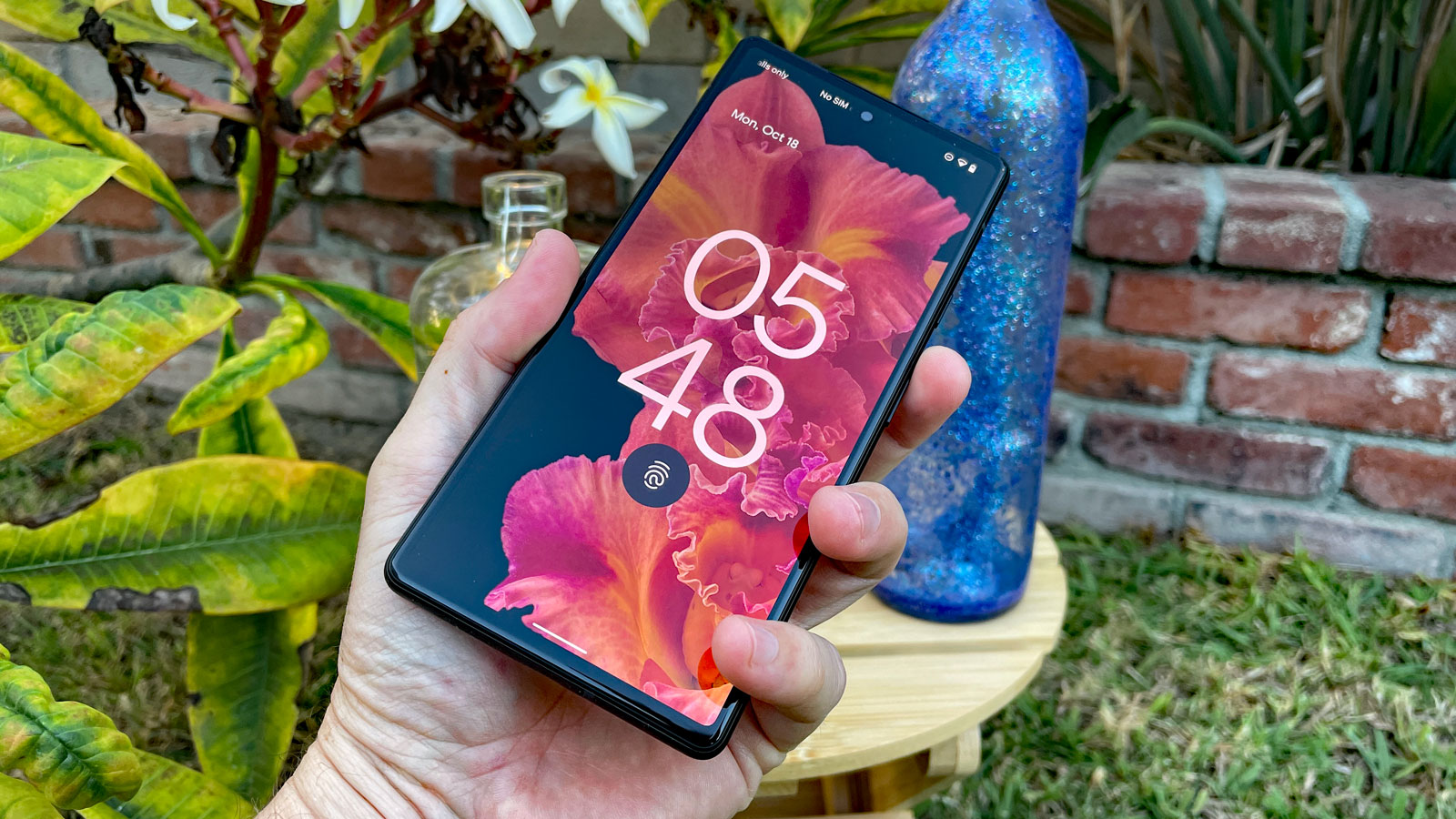
Google Pixel 6 design
The Google Pixel 6 has a new look that was officially revealed months before the phones launched – perhaps to get the public ready for the radical redesign compared to the more generic-looking Google Pixel 5, which had a single-color rear marked only by a subtle fingerprint sensor and square camera block.
The new Pixel 6, on the other hand, has a two-tone color back split by a horizontal camera block that spans the width of the phone. It’s a bold design choice, to be sure, and the jokey comparisons to Star Trek’s Geordi La Forge are as plentiful as questions about how a case will fit around the full-width camera block.
Google does offer a silicon Pixel 6 case that has additional bumpers above and below the camera gap to ensure the glass doesn’t scratch against a surface you place the phone on; still, we don’t trust that it would survive a drop, and we aren’t sure if the glass is the same Gorilla Glass Victus that’s protecting the front of the phone.
With or without the case, the Pixel 6 lies at an angle on a desk, with the sizable camera bump (especially if the phone’s not in a case) causing the ramp-like inclination.
However, unlike the Pixel 5, iPhone 13 and Galaxy S21 ranges, the full-width camera bar on the Pixel 6 means the handset doesn’t rock when you prod the screen; Apple’s and Samsung's latest ranges continue to have their camera blocks in a corner, making for an unbalanced posture when the phones are placed on a flat surface.
It may feel like a minor point, but it’s a positive feature in our book – although the overall design may prove more divisive for consumers when it comes to making a decision between the various handsets.
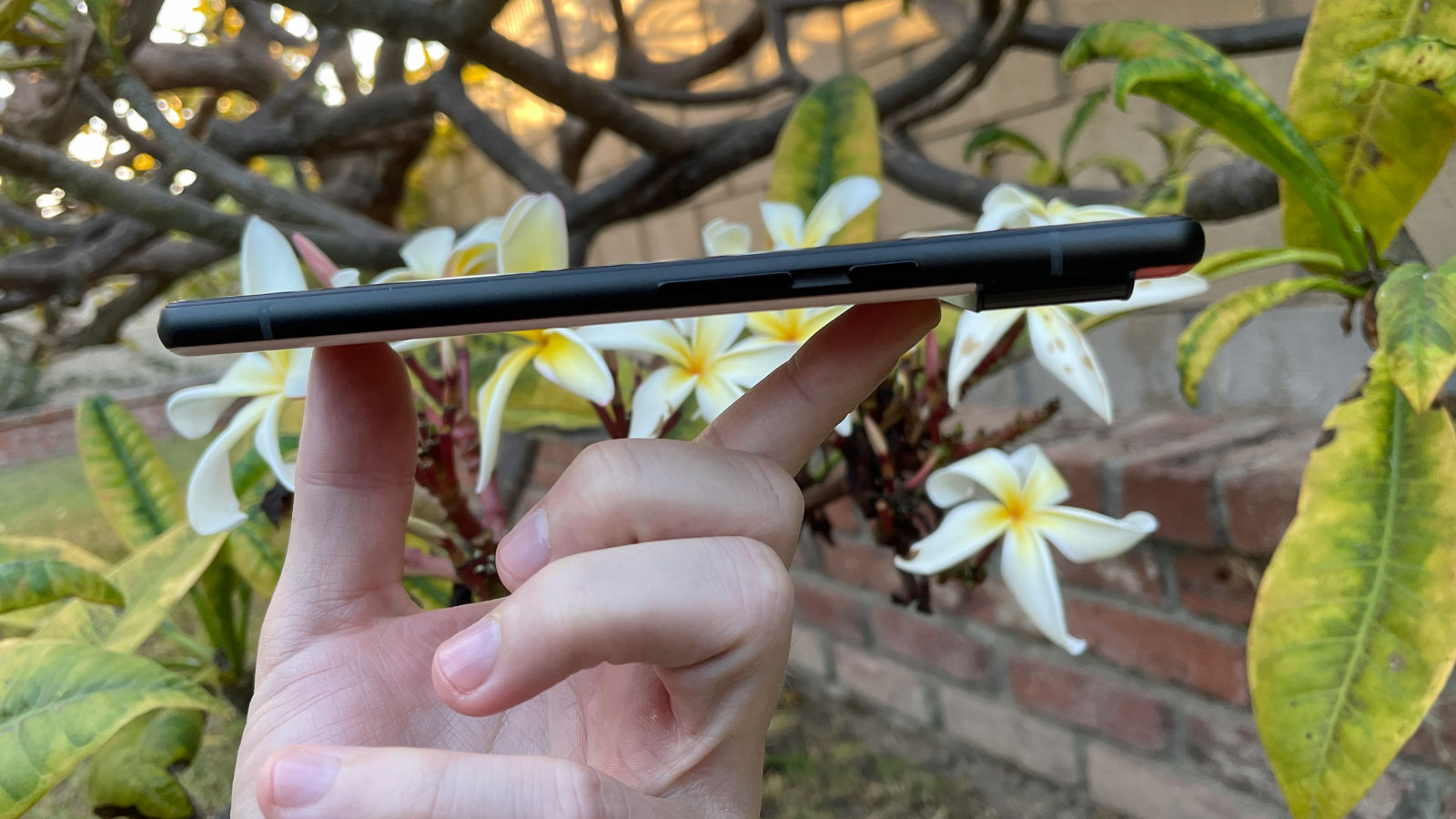
Something else the camera bar influences is the Pixel 6’s weight. At 207g it’s heavier than the iPhone 13 and 13 Pro, as well as the Galaxy S21 and S21 Plus. Pick it up and you’ll find the Pixel 6 is top-heavy, requiring a firm grip when held in one hand to ensure its safety. The ungainly balance, weight, and camera block jutting far from the back mean the phone is less svelte than other handsets; you may be slower pulling it out of a pocket or a bag, and it might catch on the way out.
While the Pixel 6 has a glass back instead of the metal that wrapped around the back and sides of the Pixel 5, the new phone does have a similar matte finish on its metal frame, with quality material that doesn’t feel cheap. Both the power and volume keys reside on the right edge of the handset, with the latter falling relatively well under thumb; the power button will be a little bit of a reach for those with smaller hands, - but it’s not a terrible placement.
IP68 dust and water resistance means the Pixel 6 should be able to survive a trip to the beach or a quick plunge in the bath.
Overall, the Google Pixel 6 isn’t as rounded as the Pixel 4 and Pixel 5 series phones, with straighter edges and less-rounded corners resulting in a look that’s not wholly dissimilar to the Sony Xperia 1 III.
The increased weight and less cutesy design help to create the more mature aesthetic Google is apparently aiming for with the Pixel 6, helping it look and feel like a real premium contender.
There’s no headphone jack here, which keeps the Pixel 6 in line with the Pixel 5 and Pixel 4 before it. If you’re a fan of wired listening you’ll need to keep your fingers crossed that a Pixel 6a arrives with a 3.5mm port, as Google has, to date, kept this connection for its cheaper ‘a’ series handsets.
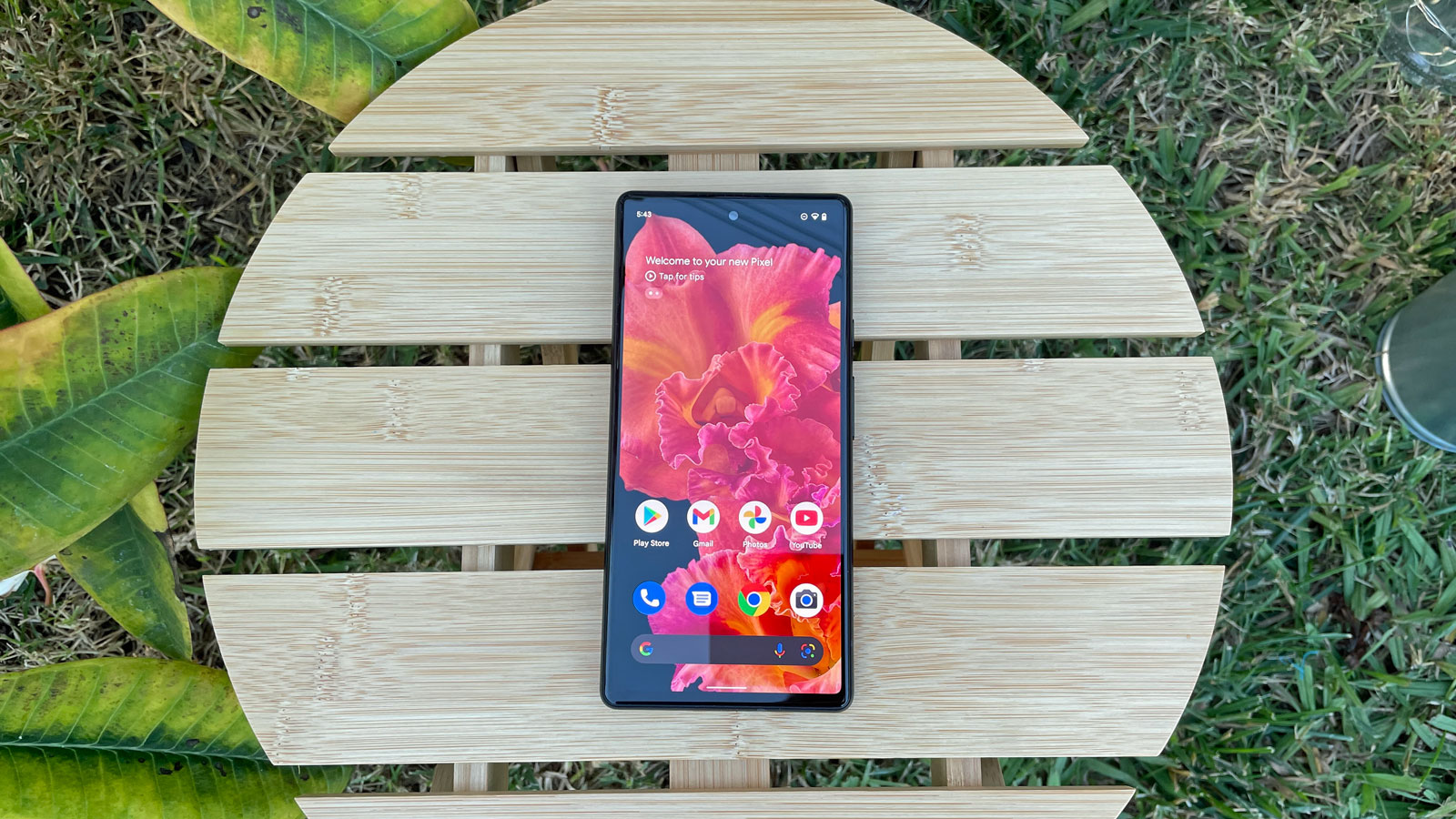
Google Pixel 6 display
With a 6.4-inch OLED display, the Google Pixel 6 has the biggest screen ever on a Pixel phone with the exception of the Pixel 6 Pro with its 6.7-inch screen, topping even the 6.3-inch Google Pixel 4 XL from 2019.
Google has equipped its latest phones with its biggest screens ever, and the Pixel 6 comes with a Full HD+ Plus 2400 x 1080 resolution (so not QHD) which equates to 441 pixels per inch. That’s about on a par with other phones at its price tier (and even with some pricier options such as the Samsung Galaxy S21). There’s also a high brightness mode, >1,000,000:1 contrast ratio, and HDR support.
The big update to the Pixel 6 display is its size, but the faster refresh rate, as seen on its predecessor, is nice to have too. It’s a 90Hz screen, which should make navigating the UI and browsing websites smoother – something else we’ll put to the test for our full, in-depth Google Pixel 6 review.
90Hz displays are more common across smartphones these days; the Pixel 6 Pro packs a 120Hz display, as do the Galaxy S21 and several other flagships, but the Pixel 6 price is lower than many of its 120Hz rivals, and 90Hz is likely sufficient for most users.
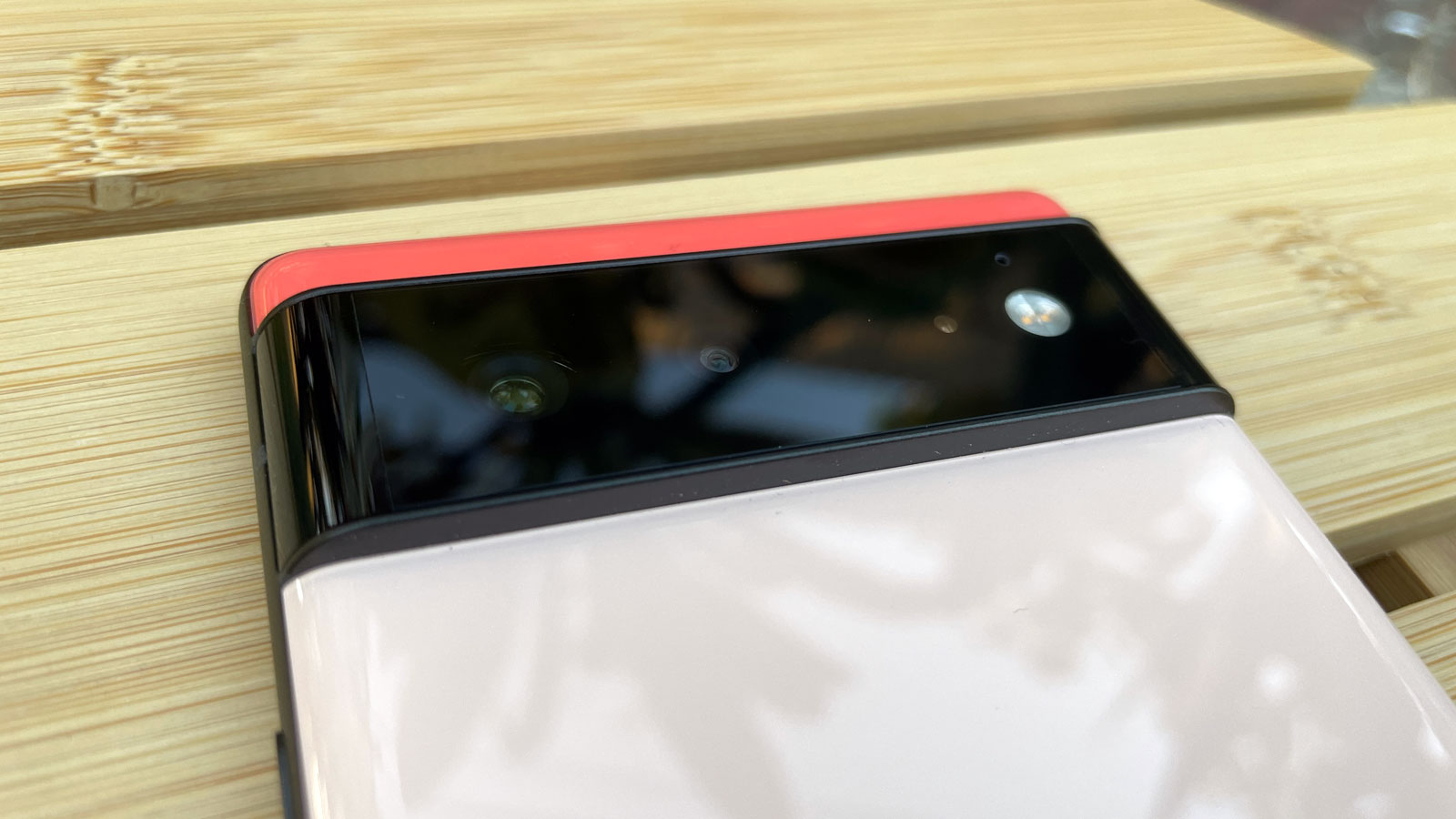
Google Pixel 6 cameras
While the Pixel 6 doesn’t pack any more cameras than its predecessor (you’ll have to upgrade to the Pixel 6 Pro if you want a telephoto shooter), its suite has been upgraded with higher-megapixel cameras.
On its rear, the Pixel 6 has a 50MP main shooter with an 82-degree field of view and f/1.85 aperture, and a 12MP ultra-wide camera with 114-degree field of view and f/2.2 aperture.
There’s also a 8MP front-facing camera, in a punch-hole at the center-top of the display, which has an 84-degree field of view and f/2.0 aperture.
While there’s no optical zoom available here, as there is on the Pro model, the Pixel 6 comes with ‘Super Res Zoom’ which gets you a 7x digital zoom.
Digital zoom isn’t as good as optical, as it crops in on the image to artificially get you closer to the action, which means some image quality is lost. We’ll be interested to see how Super Res Zoom fares during our in-depth testing.
As we didn’t have a chance to take the phone’s cameras for a spin, we can’t say whether they’ve improved over the Pixel 5’s shooters – and that’s something we’re eager to find out now that the Pixel 6 has its Tensor chipset processing images and running Google’s already-impressive photo software.
There’s a laundry list of features we’re eager to try out that harness the chipset’s power, which means these features may not trickle down to older Pixel phones, as has been the case with prior flagship Google handsets.
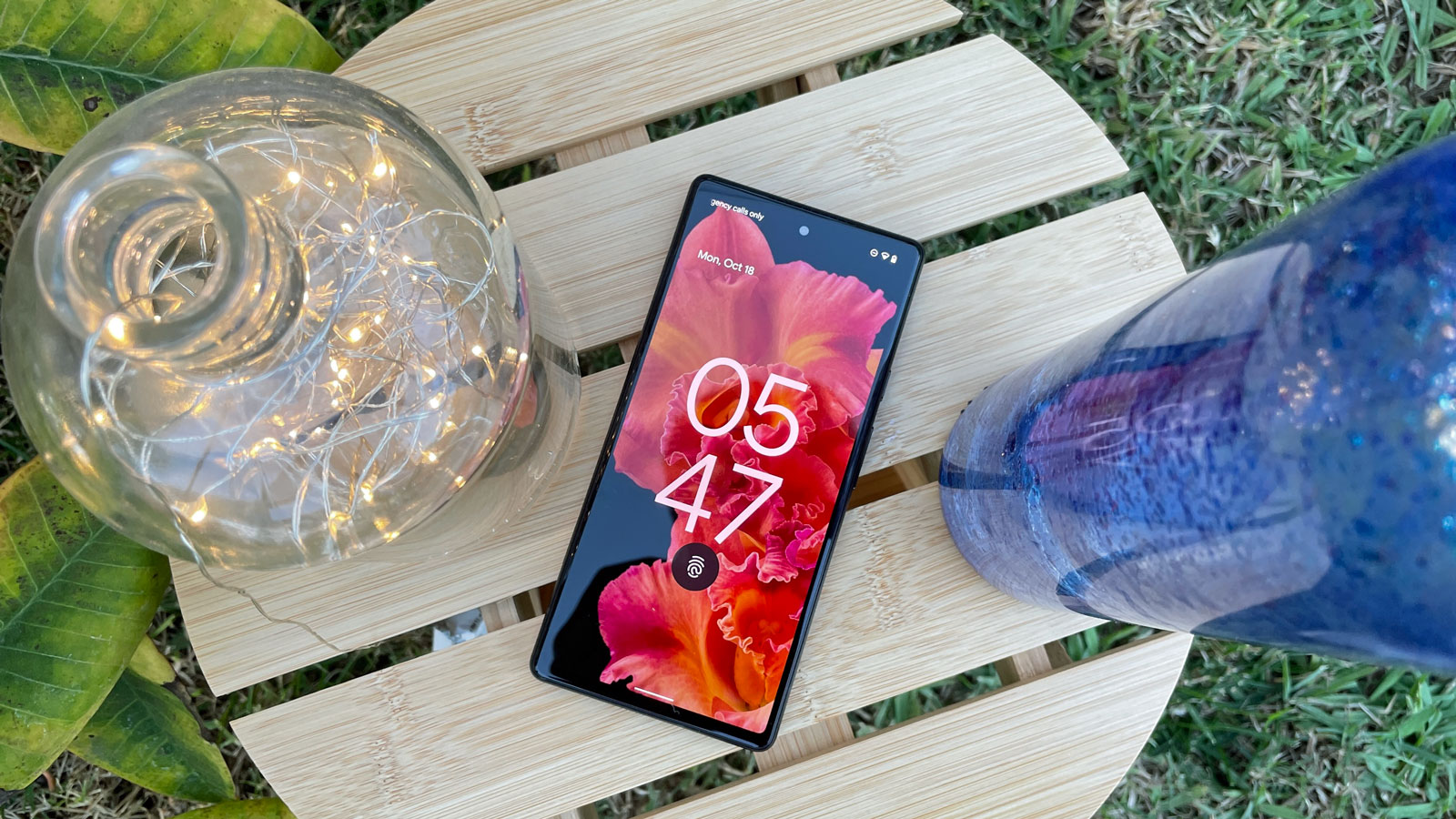
Google Pixel 6 performance and battery
The Google Pixel 6’s specs are another great mystery. Just how good will the Google-designed Tensor chipset be? Will it empower the phone, and Android, to scale new heights in terms of performance, or will the handset remain indistinguishable from a Snapdragon-powered one?
We haven’t yet had enough time with the phone to definitively say. But the Pixel 6’s other key specs are respectable, with 8GB of RAM and either 128GB or 256GB of storage.
We can at least be relieved that Google likely won’t repeat the mistake of hobbling its new phones with inadequate battery life: the Google Pixel 6 has a 4,612mAh capacity, up from the 4,080mAh of last year’s Pixel 5, and far above the measly 2,800mAh in the Pixel 4.
While the Pixel 6 Pro’s battery offers even more capacity at 5,000mAh battery, we expect the Pixel 6 to comfortably make it through a full day of use. Google claims the phone will last for up to 24 hours, which can be extended to 48 hours with the help of the Extreme Battery Saver mode – we’ll be sure to put that to the test for our full review.
The Pixel 6 supports fast charging up to 30W, but while you get a USB-C to USB-C cable in the box, there’s no plug adapter, with Google joining other phone makers in the war on e-waste, so you’ll need to source one yourself.
Google says the Pixel 6 can be replenished to a respectable 30% of charge in 30 minutes when using the company’s 30W USB-C Charger – although that’s an optional extra you’ll have to pay for.
It’s nowhere near the fastest charging we’ve seen, though: at the top of our list is the Xiaomi 11T Pro, which can get a full charge in just 17 minutes via its 120W charger. Even other Android flagships with less absurdly-fast charging – the Asus ROG 5 supports 60W charging, and the OnePlus 9 can hit 65W – would leave the Pixel 6 in the dust.
There’s also support for wireless charging (up to 21W), enabling you to pop the Pixel 6 down on a charging mat without the need to fumble for a cable – that’s not a bad rate compared to the 10W and 15W maximum wireless charging rates typical of other phones.

Early thoughts
Without testing the Tensor ourselves, it’s impossible to tell how much the Google Pixel 6 has improved on its predecessor, and how it compares to other top-tier phones – Google itself says its new handset will compete against ‘premium’ phones, so we expect that to mean the Pixel 6 could rival the Samsung Galaxy S21 at least.
Given the Pixel 6’s lower price, though, we’re not sure if it means it will compete outright, or compete in terms of value for money, with less-impressive performance offset by the lower price.
We’re optimistic, though: a common lament with Pixels past was that Google’s incredible photo software was paired with such limited cameras, which hadn’t exceeded 12MP before the Pixel 6.
It was understood that the software had been optimized to get the most from these low-MP cameras, so perhaps we can presume that the software here has been updated to harness the power of the new Tensor chipset. Likewise, we have big expectations for how the Google-designed silicon will impact general performance, gaming, and the Android experience as a whole.
There’s a lot we still don’t know about the Pixel 6, but a lot we’re excited about, too, and given the limited availability of prior Google flagships, we hope to see this phone made available to more customers in more regions.
We’ll have to wait until we’ve tested the handset in depth for our full review to see if we can recommend it. But this is Google’s biggest overhaul of its smartphone line in years, and we’re excited to see whether the Pixel 6 can deliver on its considerable promise.
0 comments:
Post a Comment